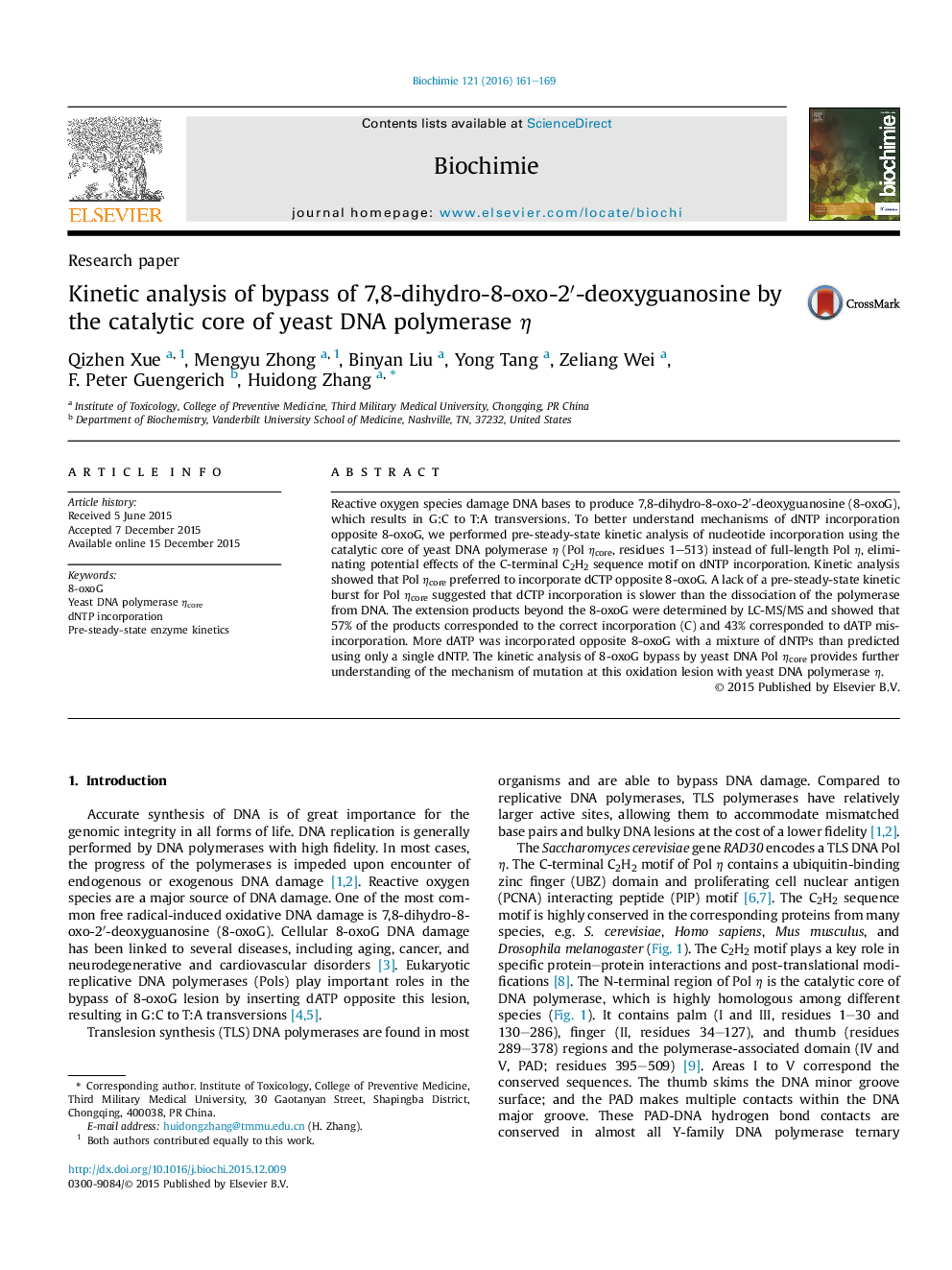| Article ID | Journal | Published Year | Pages | File Type |
|---|---|---|---|---|
| 1951923 | Biochimie | 2016 | 9 Pages |
•Use of yeast pol ηcore eliminates the effects of C-terminal C2H2 motif on dNTP incorporation.•Pol ηcore preferentially incorporates dCTP opposite 8-oxoG and extends from it.•Pol ηcore showed no kinetic burst for incorporation opposite G or 8-oxoG.•Pol ηcore inserted 57% C and 43% A opposite 8-oxoG followed by correct extension.
Reactive oxygen species damage DNA bases to produce 7,8-dihydro-8-oxo-2′-deoxyguanosine (8-oxoG), which results in G:C to T:A transversions. To better understand mechanisms of dNTP incorporation opposite 8-oxoG, we performed pre-steady-state kinetic analysis of nucleotide incorporation using the catalytic core of yeast DNA polymerase η (Pol ηcore, residues 1–513) instead of full-length Pol η, eliminating potential effects of the C-terminal C2H2 sequence motif on dNTP incorporation. Kinetic analysis showed that Pol ηcore preferred to incorporate dCTP opposite 8-oxoG. A lack of a pre-steady-state kinetic burst for Pol ηcore suggested that dCTP incorporation is slower than the dissociation of the polymerase from DNA. The extension products beyond the 8-oxoG were determined by LC-MS/MS and showed that 57% of the products corresponded to the correct incorporation (C) and 43% corresponded to dATP misincorporation. More dATP was incorporated opposite 8-oxoG with a mixture of dNTPs than predicted using only a single dNTP. The kinetic analysis of 8-oxoG bypass by yeast DNA Pol ηcore provides further understanding of the mechanism of mutation at this oxidation lesion with yeast DNA polymerase η.
